-

- Sopto Home
-

- Special Topic
-

- Twinax Cable Knowledge
-

- 10 Critical Elements of an Efficient Data Center
Twinax Cable Knowledge
- Cable Labeling as Part of Data Center Management
- How to Correctly Run cables On Servers in a Data Center?
- 4 Realities You Should Consider 10G Ethernet for Your Business
- Is it finally the end of copper?
- Why We Need Both 40G and 100G Ethernet Cable?
- What is Twisted Pair Cable?
- Benefits of Twisted Pair Cable Construction
- Why Copper Is Used in Cables?
- A Brief Look at Ethernet Cable Construction
SOPTO Special Topic
Certificate



Guarantee
Except products belongs to Bargain Shop section, all products are warranted by SOPTO only to purchasers for resale or for use in business or original equipment manufacturer, against defects in workmanship or materials under normal use (consumables, normal tear and wear excluded) for one year after date of purchase from SOPTO, unless otherwise stated...
Return Policies
Defective products will be accepted for exchange, at our discretion, within 14 days from receipt. Buyer might be requested to return the defective products to SOPTO for verification or authorized service location, as SOPTO designated, shipping costs prepaid. .....
Applications
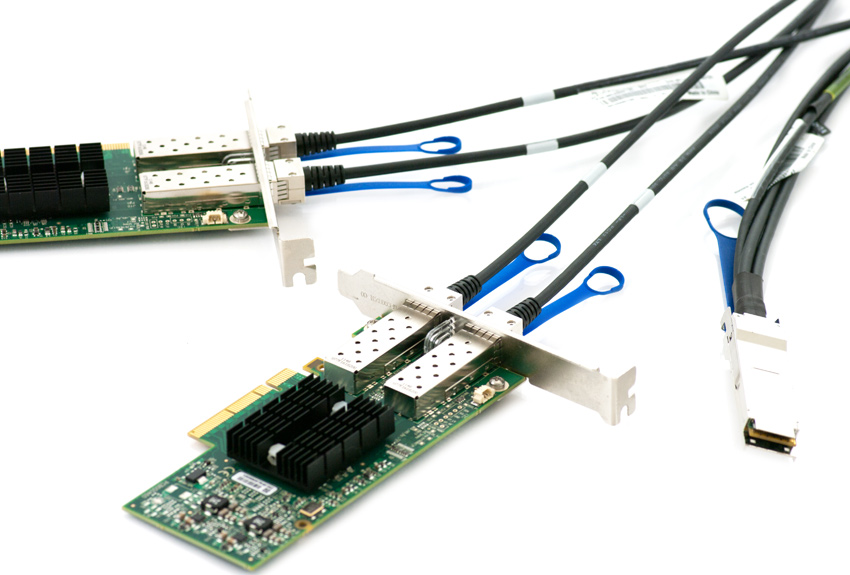 Twinax Cables are mainly used with PCI or PCI-E Card for the short distance interconnection in the server room.
Twinax Cables are mainly used with PCI or PCI-E Card for the short distance interconnection in the server room.
SOPTO Products
- Fiber Optic Transceiver Module
- High Speed Cable
- Fiber Optical Cable
- Fiber Optical Patch Cords
- Splitter CWDM DWDM
- PON Solution
- FTTH Box ODF Closure
- PCI-E Network Card
- Network Cables
- Fiber Optical Adapter
- Fiber Optical Attenuator
- Fiber Media Converter
- PDH Multiplexers
- Protocol Converter
- Digital Video Multiplexer
- Fiber Optical Tools
- Compatible
Related Products
Performance Feature
Stable Transmission Speed
Reliable Transmission
Various Length Selection
Wider Operating Temperature
Good for HPC
Good for Data Center
Twinax Cable Knowledge
Recommended
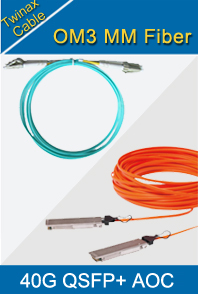
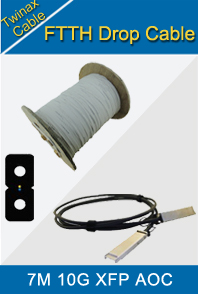
10 Critical Elements of an Efficient Data Center
The evolution of the data center may transform it into a very different environment thanks to the advent of new technologies such as cloud computing and virtualization. However, there will always be certain essential elements required by any data center to operate smoothly and successfully. These elements will apply whether your data center is the size of a walk-in closet or an airplane hanger - or perhaps even on a floating barge, which rumors indicate Google is building:
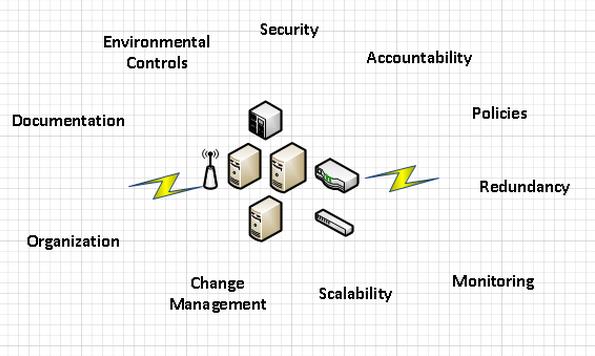
10 Critical Elements of an Efficient Data Center
1. Environmental controls
A standardized and predictable environment is the cornerstone of any quality data center. It’s not just about keeping things cool and maintaining appropriate humidity levels (according to Wikipedia, the recommended temperature range is 61-75 degrees Fahrenheit/16-24 degrees Celsius and 40-55% humidity). You also have to factor in fire suppression, air flow and power distribution. One company I worked at was so serious about ensuring their data center remained as pristine as possible that it mandated no cardboard boxes could be stored in that room. The theory behind this was that cardboard particles could enter the airstream and potentially pollute the servers thanks to the distribution mechanism which brought cooler air to the front of the racks. That might be extreme but it illustrates the importance of the concept.
2. Security
It goes without saying (but I’m going to say it anyhow) that physical security is a foundation of a reliable data center. Keeping your systems under lock and key and providing entry only to authorized personnel goes hand and hand with permitting only the necessary access to servers, applications and data over the network. It’s safe to say that the most valuable assets of any company (other than people, of course) reside in the data center. Small-time thieves will go after laptops or personal cell phones. Professionals will target the data center. Door locks can be overcome, so I recommend alarms as well. Of course, alarms can also be fallible so think about your next measure: locking the server racks? Backup power for your security system? Hiring security guards? It depends on your security needs, but keep in mind that “security is a journey, not a destination.”
3. Accountability
Speaking as a system administrator, I can attest that most IT people are professional and trustworthy. However, that doesn’t negate the need for accountability in the data center to track the interactions people have with it. Data centers should log entry details via badge access (and I recommend that these logs are held by someone outside of IT such as the Security department, or that copies of the information are kept in multiple hands such as the IT Director and VP). Visitors should sign in and sign out and remain under supervision at all times. Auditing of network/application/file resources should be turned on. Last but not least, every system should have an identified owner, whether it is a server, a router, a data center chiller, or an alarm system.
4. Policies
Every process involved with the data center should have a policy behind it to help keep the environment maintained and managed. You need policies for system access and usage (for instance, only database administrators have full control to the SQL server). You should have policies for data retention – how long do you store backups? Do you keep them off-site and if so when do these expire? The same concept applies to installing new systems, checking for obsolete devices/services, and removal of old equipment – for instance, wiping server hard drives and donating or recycling the hardware.
5. Redundancy
Your data center is probably much shinier, more expensive, and highly critical, so you need more than a spare tire to ensure it stays healthy. You need at least two of everything that your business requires to stay afloat, whether this applies to mail servers, ISPs, data fiber links, or voice over IP (VOIP) phone system VMs. Three or more wouldn’t hurt on many scenarios either!
It’s not just redundant components that are important but also the process to test and make sure they work reliably – such as scheduled failover drills and research into new methodologies.
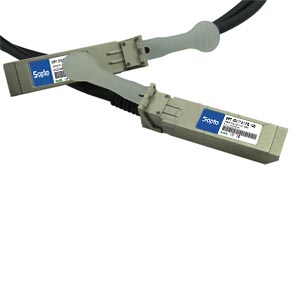
6. Monitoring
Monitoring of all systems for uptime and health will bring tremendous proactive value but that’s just the beginning. You also need to monitor how much bandwidth is in use, as well as energy, storage, physical rack space, and anything else which is a “commodity”, provided by your data center.
There are free tools such as Nagios for the nuts and bolts monitoring and more elaborate solutions such as Dranetz for power measurement. Alerts when outages or low thresholds occur is part of the process – and make sure to arrange a failsafe for your alerts so they are independent of the data center (for instance, if your email server is on a VMWare ESX host which is dead, another system should monitor for this and have the ability to send out notifications).
7. Scalability
So your company needs 25 servers today for an array of tasks including virtualization, redundancy, file services, email, databases, and analytics? What might you need next month, next year, or in the next decade? Make sure you have the appropriate sized data center with sufficient expansion capacity to increase power, network, physical space, and storage. If your data center needs are going to grow – and if your company is profitable I can guarantee this is the case - today is the day to start planning.
Planning for scalability isn’t something you stop, either; it’s an ongoing process. Smart companies actively track and report on this concept. I’ve seen references in these reports to “the next rivet to pop” which identifies a gap in a critical area of scalability that must be met (e.g., lack of physical rack space) as soon as possible.
8. Change management
You might argue that Change Management falls under the “Policies” section, a consideration which has some bearing. However, I would respond that it is both a policy and a philosophy. Proper guidelines for change management ensure that nothing occurs in your data center which hasn’t been planned, scheduled, discussed and agreed upon along with providing backout steps or a Plan “B.” Whether it’s bringing new systems to life or burying old ones, the lifecycle of all elements of your data center must fall in accordance with your change management outlook.
9. Organization
I’ve never known an IT pro who wasn’t pressed for time. Rollout of new systems can result in some corners being cut due to panic over missed deadlines – and these corners invariably seem to include making the environment nice and neat.
A successful system implementation doesn’t just mean plugging it in and turning it on; it also includes integrating devices into the data center via standardized and supportable methods. Your server racks should be clean and laid out in a logical fashion (production systems in one rack, test systems in another). Your cables should be the appropriate length and run through cabling guides rather than haphazardly draped. Which do you think is easier to troubleshoot and support; a data center that looks like this:
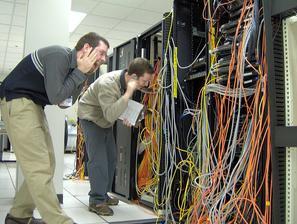
Messy Cabling
Or like this:
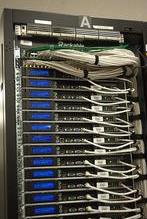
Tidy Cabling
10. Documentation
The final piece of the puzzle is appropriate, helpful, and timely documentation – another ball which can easily be dropped during an implementation if you don’t follow strict procedures. It’s not enough to just throw together a diagram of your switch layout and which server is plugged in where; your change management guidelines should mandate that documentation is kept relevant and available to all appropriate personnel as the details evolve – which they always do.
For more info, please browse our website, or contact a Sopto representative by calling 86-755-36946668, or by sending an email to info@sopto.com




